Everything one needs to know before visiting Grand Canyon National Park is encapsulated in this guide. The Grand Canyon is not just a geographical wonder; it is the second most visited national park in the United States, attracting nearly 5 million visitors per year. Covering a sprawling 1,218 square miles, this natural marvel has been carved by the mighty Colorado River over millions of years, resulting in breathtaking vistas and a glimpse into geological history stretching back millions of years. Though often perceived as a desert, the Grand Canyon is actually a lush forest set at an elevation of 7,000 feet, home to a diverse ecosystem filled with unique flora and fauna.
Overview of Grand Canyon National Park
The Grand Canyon is a mile deep and up to 18 miles wide in certain areas, offering visitors numerous opportunities for exploration, including nearly 300 miles of hiking trails. While many come for the stunning views, this park offers a wealth of activities beyond just gazing into the canyon. From hiking and biking to educational tours and cultural experiences, the Grand Canyon is a destination that caters to a wide range of interests and abilities.
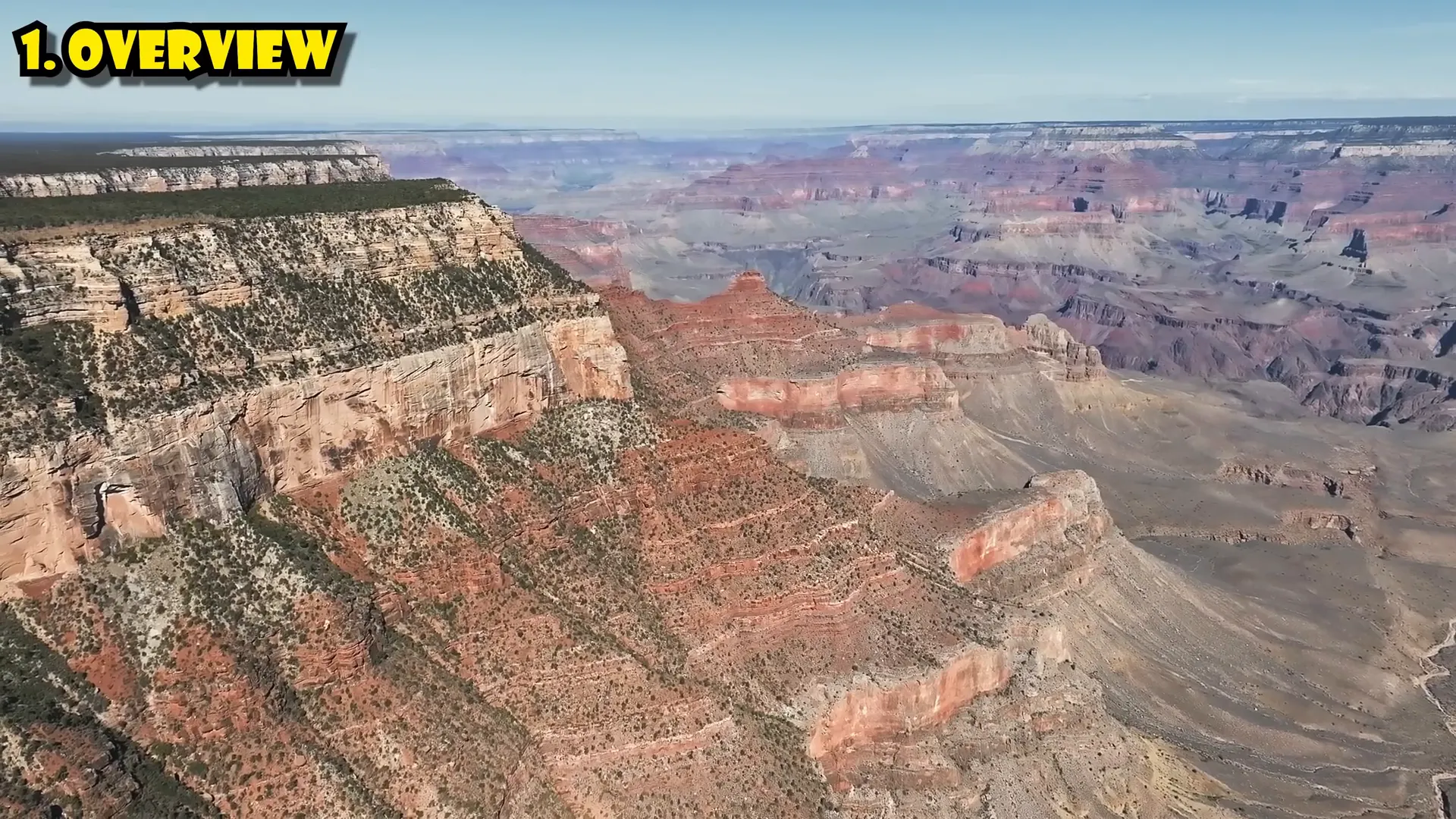
Orientation of Grand Canyon National Park
When discussing the Grand Canyon, one often hears about three main areas: the South Rim, the North Rim, and Grand Canyon West. The South Rim is the most visited section of the park, featuring the Grand Canyon Village, the El Tovar Hotel, and the iconic Mather Point, which serves as the main viewpoint. The Visitor Center here is equipped with friendly park staff ready to provide maps and recommendations. It also features a 20-minute interpretive film about the canyon’s history, shown every 30 minutes.
The North Rim, located on the opposite side of the canyon, is open seasonally during the summer, parts of spring, and fall, as winter conditions render it inaccessible due to snow and ice. While it boasts a lodge, a restaurant, and some campgrounds, it remains less frequented compared to the South Rim. Grand Canyon West, operated by the Hualapai Tribe, is home to the famous Skywalk, a glass bridge extending over the canyon. However, this area is not part of the national park.
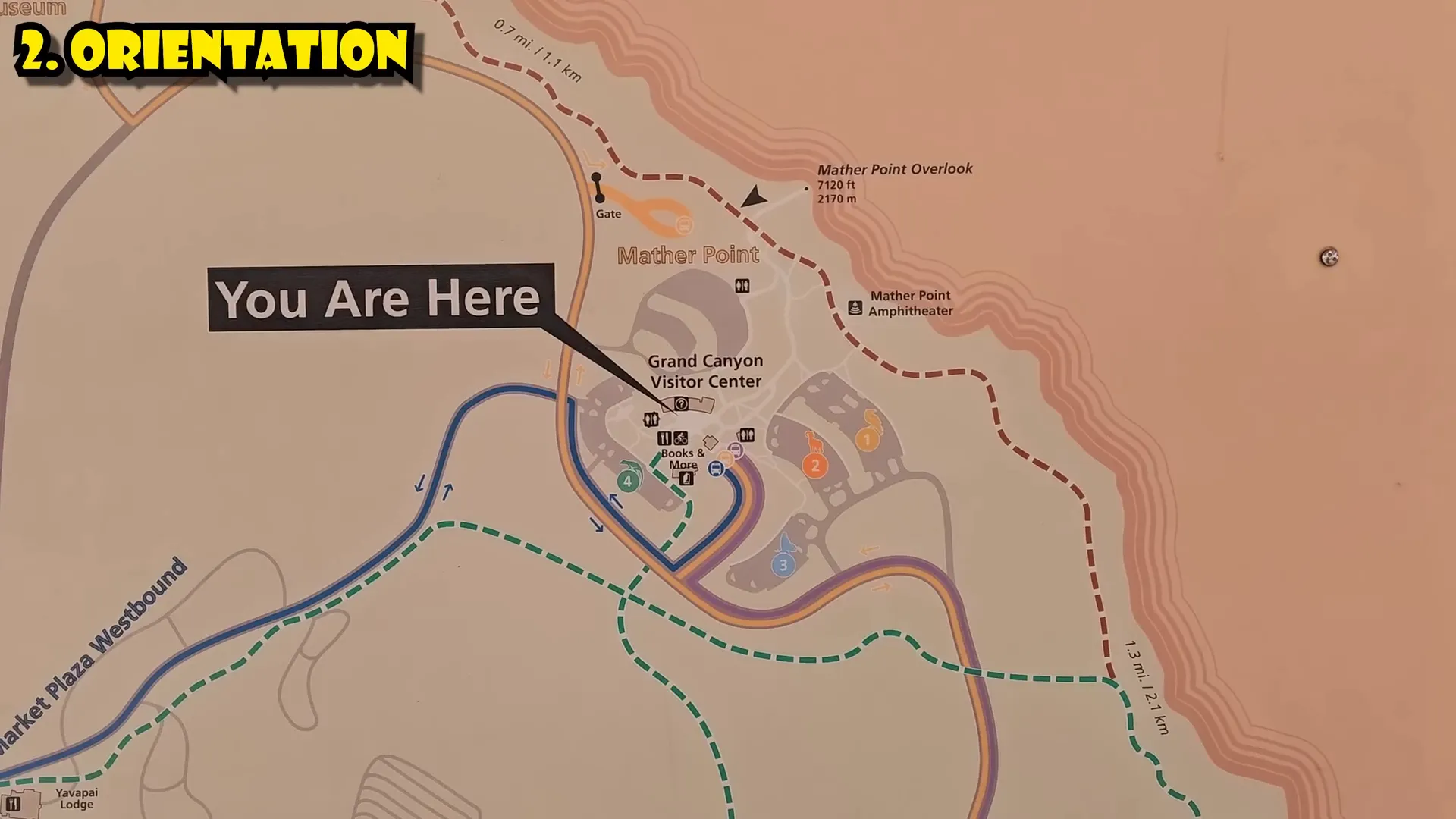
Getting into Grand Canyon National Park
Traveling to the Grand Canyon is primarily done by car. The closest major city is Phoenix, which is about a four-hour drive away. Las Vegas is approximately four and a half hours, while Los Angeles is around eight hours. The nearest airport is Flagstaff, located 90 minutes away, though it has limited flights. Many visitors opt to take a scenic train ride from Williams, Arizona, which takes about two hours and offers a unique way to experience the canyon.
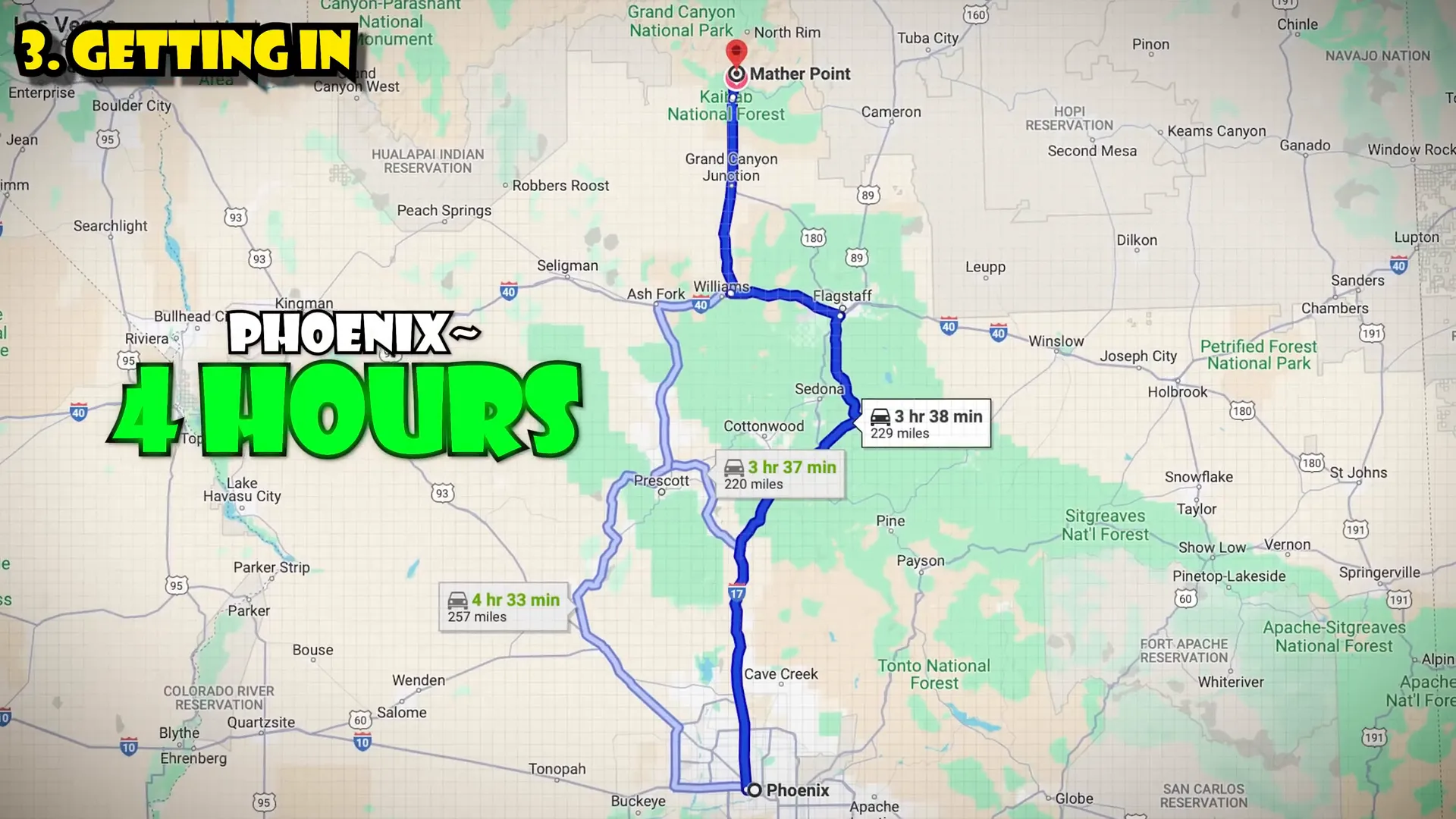
During peak season, visitors should anticipate possible delays at the entry gate, as it can take around 30 minutes to enter due to high traffic. The admission fee is $35 per vehicle, valid for seven days, while an annual national park pass costs $80, allowing access to multiple parks.
Getting Around Grand Canyon National Park
Exploring the Grand Canyon requires some planning. The park is expansive, so while many attractions are walkable, others necessitate alternative modes of transportation. Bicycling is a fantastic option, with numerous bike trails available for exploration. Rentals are available at the Grab and Go Bike Rental & Coffee Shop near the Visitor Center.
Driving within the park can be challenging during the summer months due to heavy traffic and limited parking. However, during winter, visitors may find driving more manageable as crowds diminish and certain areas open up for car access.
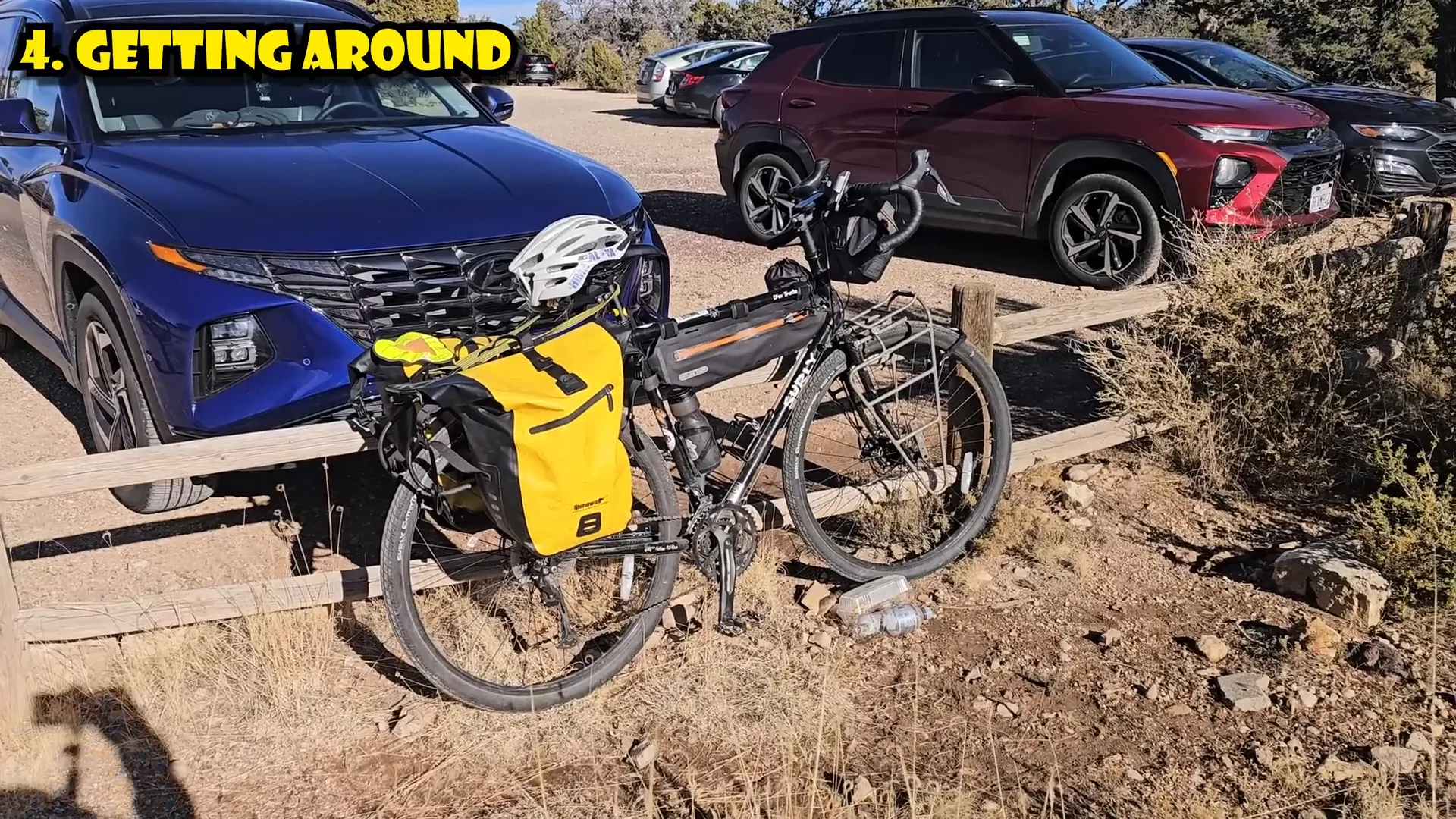
Shuttle buses are an efficient way to navigate the park, particularly in peak season. There are four shuttle routes, two operating year-round and two seasonally. The Village Loop and the Orange Line are the year-round options, while the Red Line to Hermit’s Rest operates from March to November. The shuttles run approximately every 15 minutes, making it easy to hop on and off at various points of interest.
Where to Stay in Grand Canyon National Park
Choosing accommodation is crucial for maximizing the Grand Canyon experience. The ideal option is to stay in the Grand Canyon Village, where one can easily access the rim and enjoy breathtaking sunrises and sunsets. The El Tovar Hotel is the premier choice, known for its stunning views and historic charm, though it comes at a higher price point.
Other accommodations include the Bright Angel Lodge, which offers charming rustic cabins, and various motels like the Thunderbird Lodge and Kachina Lodge, which are well-located but more affordable. For families, the Yavapai Lodge provides spacious rooms with bunk beds, while the Maswick Lodge offers convenient access to dining options.
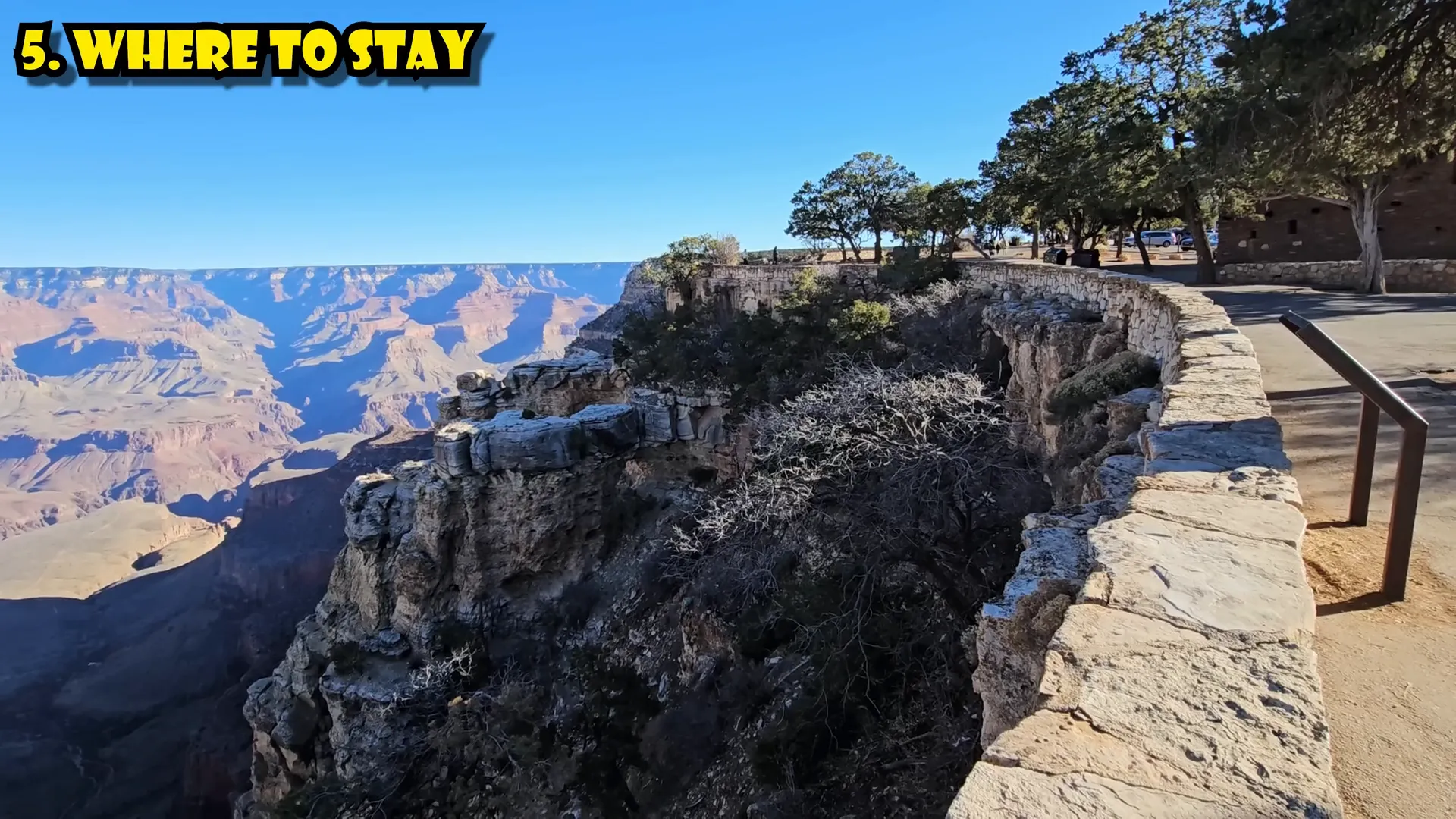
When to Go to Grand Canyon National Park
The Grand Canyon experiences high visitor volumes during the summer, but this also coincides with the hottest temperatures, making outdoor activities challenging. Spring and fall are the best times to visit, providing moderate weather and fewer crowds. For those seeking solitude, winter is an excellent option, although snow and icy conditions can occur.
Regardless of the season, planning is essential. The first few weeks of December and January typically see lower visitor numbers, leading to more enjoyable experiences. However, travelers should be prepared for potential road closures during heavy snow.
How Long to Stay in Grand Canyon National Park
While many visitors may opt for a day trip to the Grand Canyon, spending two to three days is recommended to fully appreciate the park’s offerings. This allows time for hiking, exploring various viewpoints, and engaging in activities beyond just sightseeing. For those hiking down to the canyon floor, a multi-day trip is advisable, with accommodations at Phantom Ranch or camping options available.
Food in Grand Canyon National Park
Unlike many national parks that lack dining options, the Grand Canyon offers an array of restaurants and eateries. The El Tovar Dining Room provides a fine dining experience with breakfast, lunch, and dinner available by reservation. The Bright Angel Lodge features several dining options, including the Fred Harvey Cafe and the Fountainette, which offers quick-service meals.
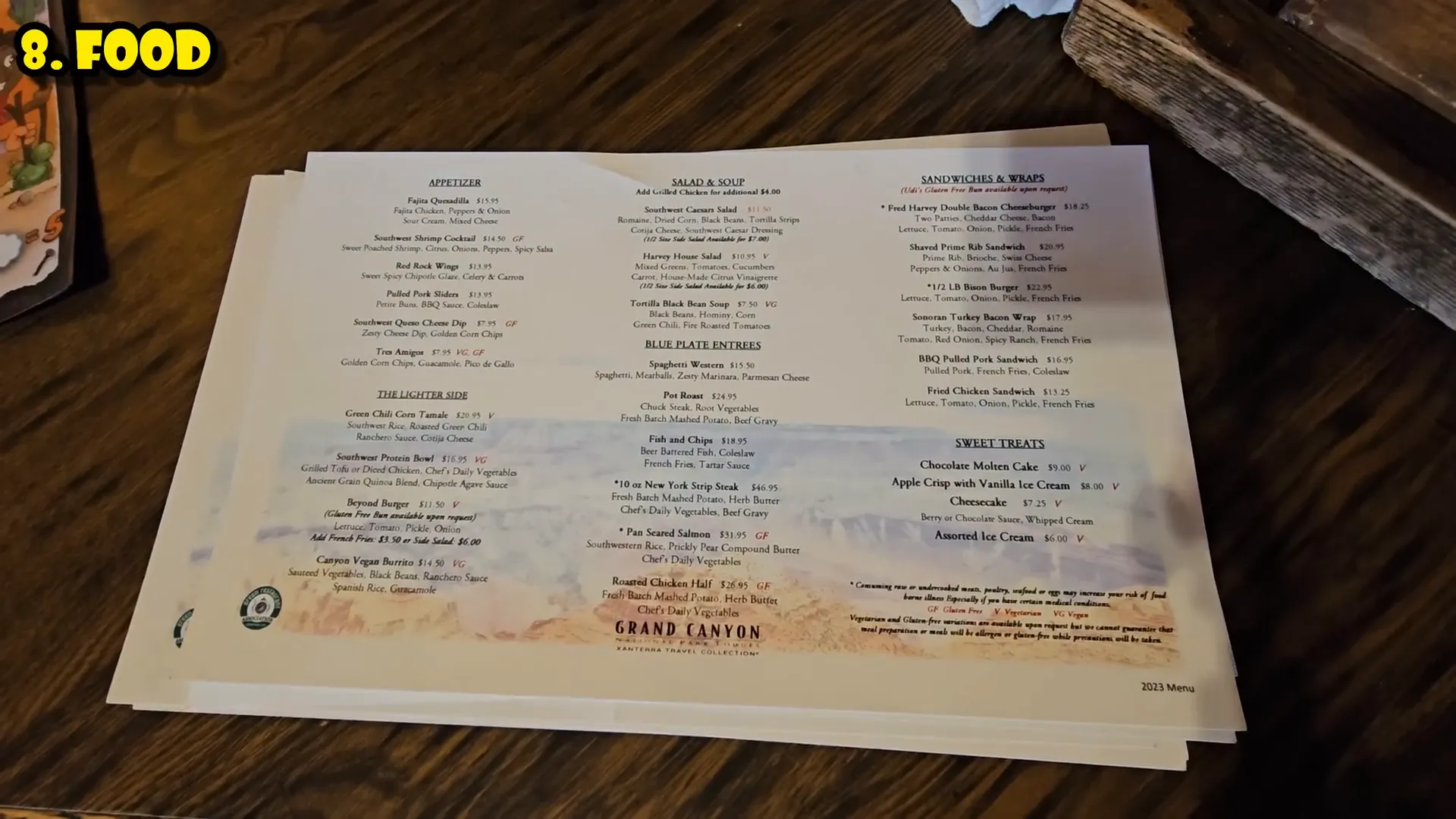
For budget-friendly meals, the food court at Maswick Lodge offers various options, including build-your-own salads and barbecue. The General Store also stocks essential groceries and grab-and-go items, making it easy to pack meals for hikes.
Things to Do in Grand Canyon National Park
The Grand Canyon offers a multitude of activities beyond just enjoying the views. Hiking is a popular pursuit, with trails catering to all skill levels. The Bright Angel Trail is a well-known route that leads down to the canyon floor, while the Rim Trail offers stunning views along the rim with relatively little elevation gain. The Hermit Trail provides a more secluded hiking experience, ideal for those looking to escape the crowds.
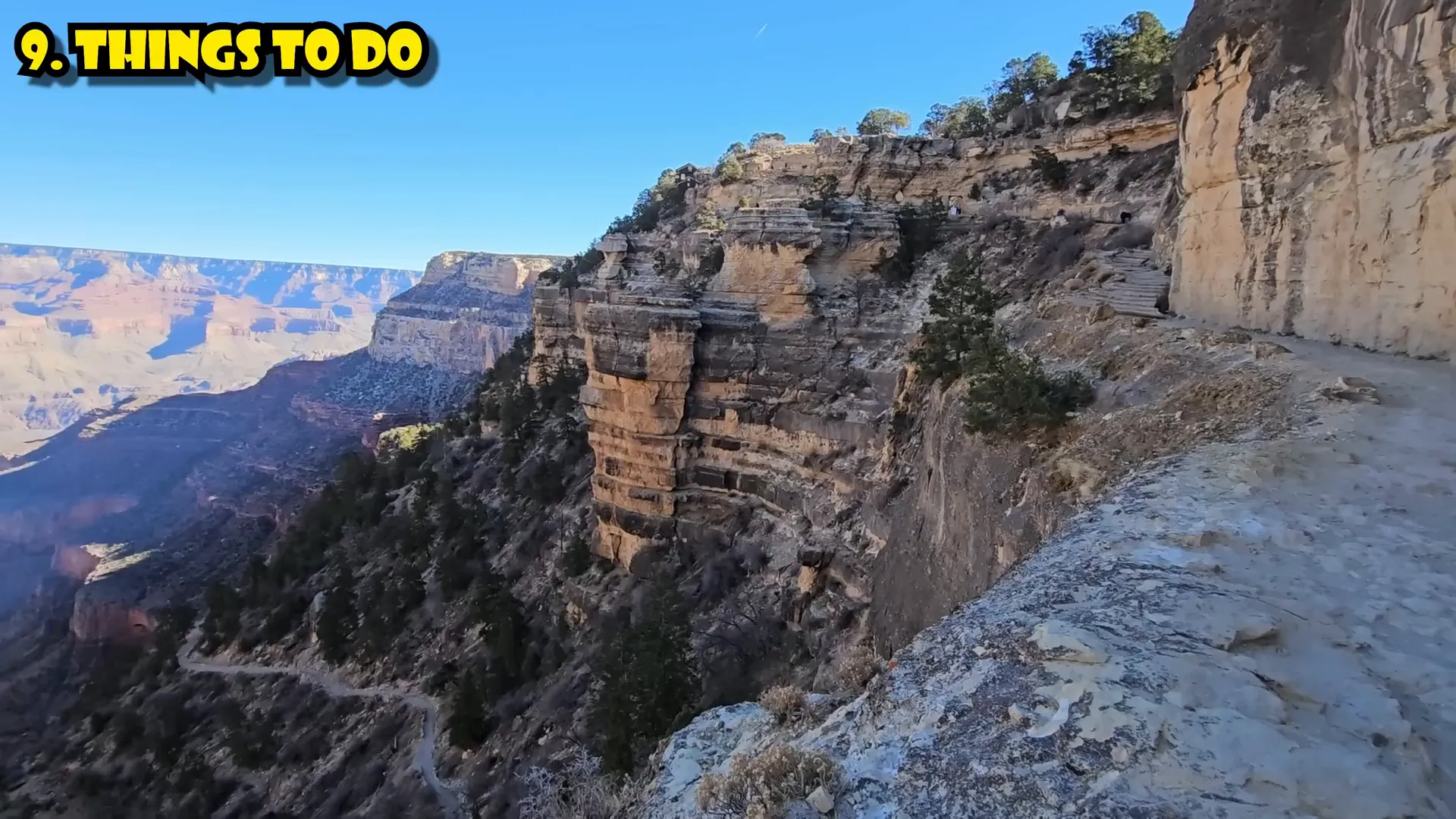
Visitors can also enjoy scenic drives, such as the Desert View Drive, which leads to the Desert View Watchtower, offering panoramic views of the canyon. The Yavapai Geology Museum provides educational insights into the canyon’s formation, while various lookout points offer opportunities for photography and reflection.
Frequently Asked Questions
- What is the best time to visit the Grand Canyon? Spring and fall are ideal due to moderate temperatures and fewer crowds.
- How long should one stay at the Grand Canyon? A minimum of two to three days is recommended to fully explore the park.
- What dining options are available within the park? The Grand Canyon offers numerous dining options, including sit-down restaurants and quick-service eateries.
- Can one hike to the bottom of the canyon in one day? It is not recommended for first-time visitors; a multi-day hike is advisable.
- Is there camping available? Yes, there are campgrounds along the South Rim, as well as backcountry camping options with permits.
For those planning a visit, the Grand Canyon National Park is a treasure trove of natural beauty, adventure, and tranquility. By taking the time to prepare and immerse oneself in its offerings, visitors can create unforgettable memories that will last a lifetime.
For more information on vacation rentals near the Grand Canyon, visit Stay Copper Rock for options that enhance the experience of this iconic destination.

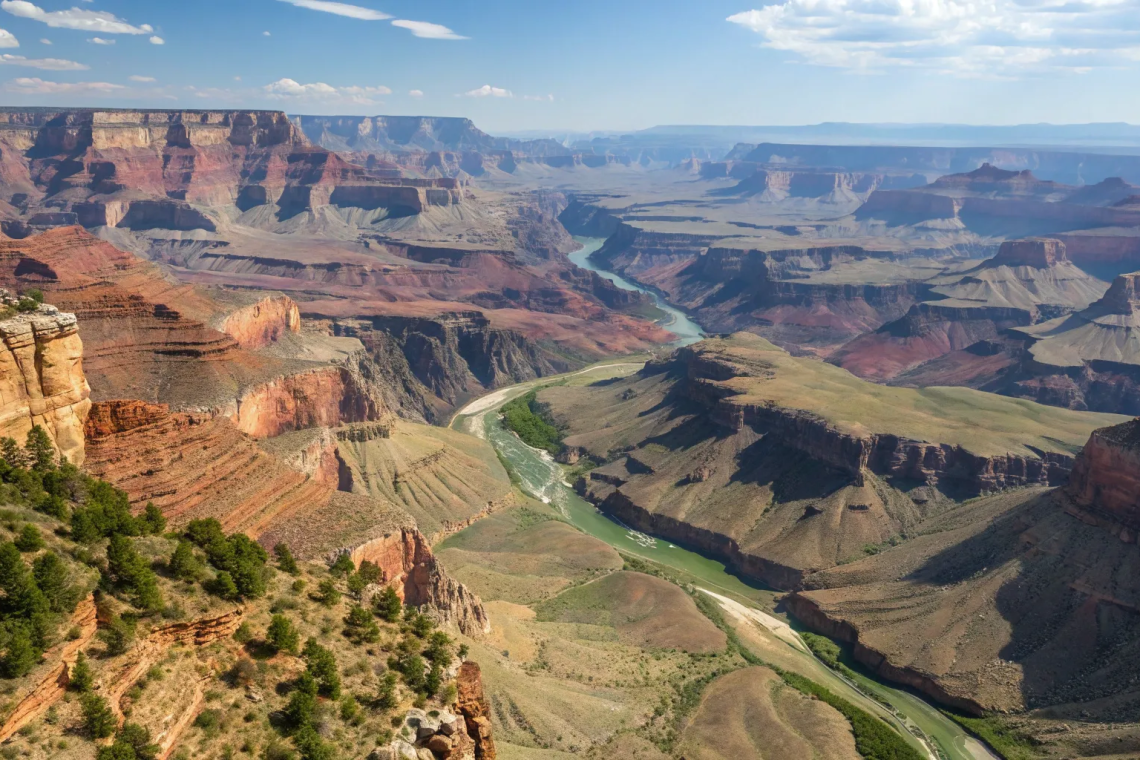







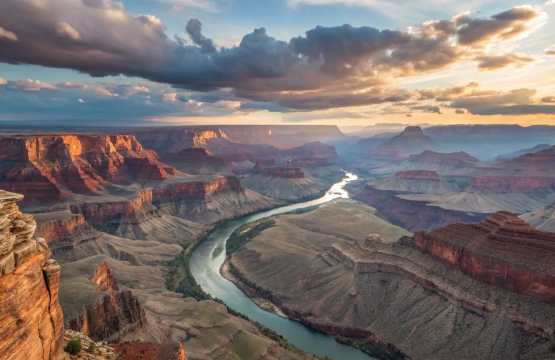
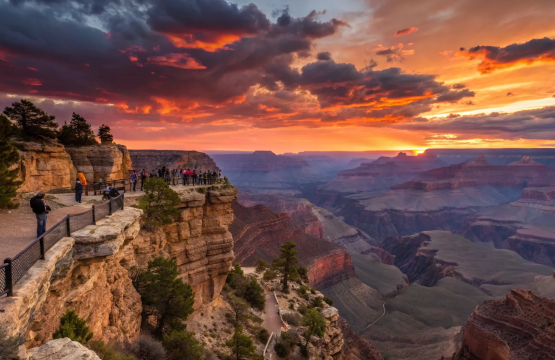
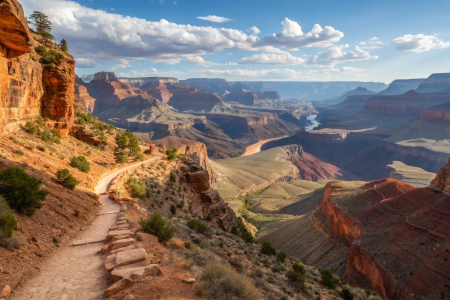
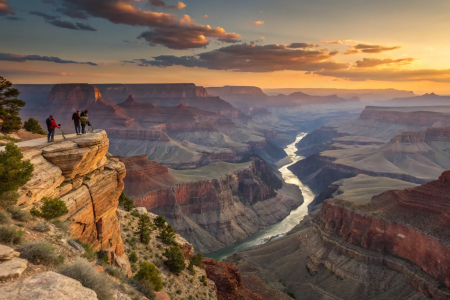


Join The Discussion